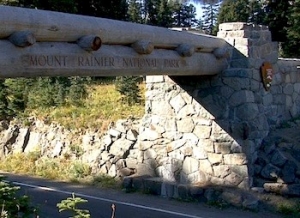Safety Tips: Dark Adaptation
 We cyclists enjoy the range of colors that we see on any given day the moment we roll out of our driveways: the blue skies, the green leaves, the red roses, the neon pink jersey of the rider in front of us. But we also experience a range of lighting conditions, from bright sunshine to dark tunnels and everything in between like dappled shade from trees. It is the transition from bright to dark environments that could become a safety issue if we are unable to see obstacles like rocks, debris, potholes, and people which could (and have) bring us and/or others tumbling to the pavement.
We cyclists enjoy the range of colors that we see on any given day the moment we roll out of our driveways: the blue skies, the green leaves, the red roses, the neon pink jersey of the rider in front of us. But we also experience a range of lighting conditions, from bright sunshine to dark tunnels and everything in between like dappled shade from trees. It is the transition from bright to dark environments that could become a safety issue if we are unable to see obstacles like rocks, debris, potholes, and people which could (and have) bring us and/or others tumbling to the pavement.
The focus of this article is not about improving the dark adaptation speed of our eyes (it takes a good fifteen to twenty minutes for our eyes to adapt in a dark theatre), but practical things we can do while on a ride.
First and foremost is to slow down as you are approaching a tunnel or other dark area. As a newcomer to Portland years ago, I made the mistake of not slowing down enough as I descended Rocky Butte and entered the tunnel. For a few seconds, everything was dark as I did my best to guess where the road was, not an ideal situation. I was lucky and escaped a potential spill.
Second, if traffic conditions permit, choose to ride in portions of the road that are lit rather than shaded, and maintain smooth lines in doing so for the benefit of those following behind. Of course, this involves looking ahead, a defensive driving skill we all need as travelers, whether by bike or by car.
Third, don’t forget to remove your sunglasses when appropriate. Maybe it’s late in the day or the weather has changed. It’s easy to forget that you’re even wearing them.
Perhaps you find your eyes not responding as quickly as you remember they once did. You may wish to consult your eye doctor. Here is a link to an article about macular degeneration.
Joel Loh, Member at Large
